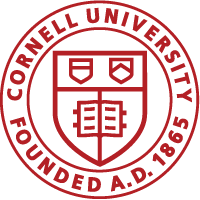Mentor: Richard Cerione
Education:
B. S. Chemistry (Magna Cum Laude), University of Puerto Rico, Río Piedras Campus, PR, 2012
Awards:
2007 Leadership Award
2008-2012 University of Puerto Rico Honor Student, University of Puerto Rico, Río Piedras Campus, San Juan, PR
2009-2011 Minority Access to Research Careers (MARC) fellowship
2011 Best Students in Chemistry from the Universities of Puerto Rico
2011-2012 Research Initiative for Scientific Enhancement (RISE) fellowship
Research Experiences:
August, 2009 – 2012, University of Puerto Rico, Río Piedras Campus, San Juan, PR
Project: “Design an electrochemical biosensor for applications directed to detecting the presence of Pseudomonas aeruginosa (PA)”
Principal Investigator: Ana R. Guadalupe, Ph.D
Summer, 2010, REU/Leadership Alliance Summer Research Program at Columbia University, New York, NY
Project: “Novel Zn-Porphyrin Tweezer as a Circular Dichroism Sensitive Reporter of Amino Alcohol Chirality”
Principal Investigator: Nina Berova, Ph.D
Summer, 2009, Alliances for Graduate Education and the Professoriate (AGEP) Summer Research Program at North Carolina State University, Raleigh, NC
Project: “Developent and Characterization of Reagents for the Improved Mass Spectral Detection and Quantification of N-Glycans Derived from Plasma Glycoproteins”
Principal Investigators: Daniel L. Comins, Ph.D. and David Muddiman, Ph.D.
July, 2008-May 2009, University of Puerto Rico, Río Piedras Campus San Juan, PR
Project: “Integrating Computational Chemistry into the Undergraduate Chemistry Curriculum”
Principal Investigator: Carlos M. Torres Díaz, Ph.D
Current Research Activities:
Test the generality of Sirt2-Selective inhibitors for treatment of Triple Negative Breast Cancer in mouse models
Inhibition of sirtuins, a family of enzymes that remove post-translational modifications groups such as acetyl groups, has been shown to have anticancer effects. Given that Sirt2 inhibitors have potent anti-cancer activity in cell culture, I am examining Sirt2 as a potential target for anticancer therapy in vivo. During this year I have been testing three Sirt2-specific inhibitors developed by Dr. Lin’s lab on genetically modified mouse model and xenotransplanted breast cancer tumors mouse model.
Determine how genetic inactivation of Sirt5 affects cell transformation and tumorigenesis.
Sirt5 is a mitochondrial protein that catalyzes nicotinamide adenine dinucleotide (NAD)- dependent demalonylation and desuccinylation on target proteins. It is believed to reversibly regulate mitochondrial protein activity. Preliminary studies have shown that Sirt5 knockdown in cancer cells inhibits their transformed properties. We hypothesized that Sirt5 plays a critical role in regulating the post-translational modifications of key enzymes involved in cancer metabolism. To achieve these goals, I am using two different mouse models to study the effect of Sirt5 inactivation in mammary and lung tumorigenesis.
Publications:
Enríquez, Y.; Negrón, Y.; Navarreto, M.; Guadalupe, S. (2013) Development of an electrochemical biosensor for the detection of an ADP-ribosylating toxin, exo A from Pseudomonas aeruginosa. J. Physics: Conference Series, 421, 012021.
Petrovic, A.; Vantomme, G.; Negrón-Abril, Y.L.; Lubian, E., Saielli, G.; Menegazzo, I.; Cordero, R., Proni, G.; Nakanishi, K.; Carofiglio, T.; Berova, N. (2011) Bulky melamine-based Zn- porphyrin tweezer as a CD probe of molecular chirality. Chirality 23: 9, 808-819. PubMed
Bordeleau, F., Califano, J. P., Negron Abril, Y. L., Mason, B. N., LaValley, D. J., Shin, S. J., Weiss, R. S., and Reinhart-King, C. A. (2015) Tissue stiffness regulates serine/arginine-rich protein-mediated splicing of the extra domain B-fibronectin isoform in tumors, Proc. Natl. Acad. Sci. U. S .A. 12, 8314-8319. PubMed
Jing, H., Hu, J., He, B., Negron Abril, Y. L., Stupinski, J., Weiser, K., Carbonaro, M., Chiang, Y. L., Southard, T., Giannakakou, P., Weiss, R. S., and Lin, H. (2016) A SIRT2-Selective Inhibitor Promotes c-Myc Oncoprotein Degradation and Exhibits Broad Anticancer Activity, Cancer Cell 29, 297-310. PubMed

